
Révélations Culinaires : Faits surprenants sur la nourriture
 11 min
11 min
Révélations Culinaires : Faits surprenants sur la nourriture
Êtes-vous prêt à vous lancer dans une aventure culinaire qui vous laissera bouche bée et vous fascinera ? Plongeons dans cette aventure et explorons les mystères que recèlent les aliments que vous avez dans votre assiette !
La nourriture n'est pas seulement une source d'alimentation, c'est aussi un trésor de secrets cachés qui ne demandent qu'à être dévoilés. Des faits étranges et bizarres aux révélations époustouflantes, le monde de la gastronomie regorge de découvertes inattendues qui mettront vos papilles à rude épreuve et élargiront vos horizons culinaires.
Toutes ces questions sur l'alimentation me sont venues à la suite d'une interrogation initiale...
Quelle est la différence entre le concombre et le cornichon ?
Les concombres et les cornichons sont de la même espèce. Les cornichons sont simplement cueillis avant qu'ils ne soient complètement développés pour les conserver dans le vinaigre (c'est pour cela qu'on les appelle cornichons ? parce qu'ils ont été cueillis plus tôt).

La plantation se fait généralement entre avril et mai, sous abri ou dans le potager entre mai et juillet, une fois le risque de gel passé. Les cornichons, qui sont essentiellement des petits concombres, sont récoltés au fur et à mesure qu'ils mûrissent, de juin à septembre, la pleine saison se situant entre juin et août, selon les régions.
Les bananes sont des baies, alors que les fraises n'en sont pas
Selon la classification botanique, une baie est un fruit charnu et pulpeux qui se développe à partir d'une seule fleur avec un seul ovaire et qui contient des graines à l'intérieur. Les bananes correspondent à cette définition puisqu'elles se développent à partir d'un seul ovaire et qu'elles contiennent de minuscules graines non développées.

En outre, une baie se définit par ses trois couches distinctes. La couche la plus externe, appelée exocarpe, est souvent la partie que nous mangeons. Elle constitue la première barrière protectrice et peut varier en texture et en goût selon le type de baie. Le mésocarpe est la partie charnue de la baie qui lui confère sa texture et sa saveur caractéristiques. L'endocarpe est la couche la plus interne de la baie qui entoure les graines. Les bananes sont donc des baies.
En revanche, les fraises ne sont pas des baies, mais des faux fruits ou des pseudo-fruits. Les véritables fruits de la fraise sont les minuscules graines qui recouvrent la surface de la baie, appelées akènes, qui sont classées en botanique comme de véritables fruits. La fraise est un complexe formé d'un réceptacle charnu qui entoure et soutient les véritables fruits (akènes). Les fraises ne répondent donc pas à la définition botanique des baies.
Les tomates étaient autrefois considérées comme toxiques en Europe.
Au XVIe siècle, les tomates ont été introduites en Europe depuis les Amériques et ont d'abord été admirées pour leurs belles couleurs et leur aspect unique. Cependant, elles n'étaient pas couramment consommées et étaient plutôt considérées comme des plantes ornementales. En effet, elles appartiennent à la famille des solanacées, qui comprend la belladone, une plante mortelle. Par conséquent, les tomates étaient parfois utilisées pour décorer les jardins et les tables.

Les tomates ont reçu le surnom de "pomme empoisonnée" après que certains aristocrates sont tombés malades et sont même morts après en avoir mangé. Cependant, la réalité était différente. Les aristocrates avaient l'habitude de manger les tomates dans des assiettes en fer blanc contenant du plomb. L'acidité de la tomate extrayait les composants solubles du plomb, ce qui provoquait le saturnisme. La véritable cause de la mort n'était donc pas la tomate, mais le plomb.
En 1710, William Salmon publia Botanologia, dans lequel il mentionnait que les tomates étaient des fruits comestibles dans certaines régions. Cette nouvelle s'est lentement répandue et de nombreuses personnes ont commencé à cultiver des tomates. Les cuisiniers du monde entier ont commencé à expérimenter des recettes à base de tomates, dont la pizza, inventée en 1880. À la même époque, Joseph Campbell a créé la soupe de tomate condensée pour préserver la tomate. Tous ces efforts ont contribué à démystifier la mauvaise réputation des tomates.
La carotte n'a pas toujours été orange
Les carottes sont cultivées en Europe depuis le XIIe siècle, mais elles n'étaient pas orange à l'origine. Les premières carottes étaient jaunes ou violettes, comme les espèces sauvages d'Afghanistan, d'où elles seraient originaires. Au fil du temps, les jardiniers ont commencé à croiser les carottes, en sélectionnant les variétés les plus charnues et les plus douces qui étaient devenues orange. Les consommateurs préféraient ces nouvelles carottes orange, plus sucrées, moins fibreuses et plus digestes que les anciennes variétés qui avaient un goût de panais ou de navet. Les premières carottes jaunes ou violettes présentaient également l'inconvénient de saigner à la cuisson, ce qui colorait la viande ou le poisson et tachait les plats. En revanche, les carottes orange ne changent pas de couleur à la cuisson.

Le changement de couleur des carottes est dû à leurs gènes. Les carottes orange ont trois gènes qui sont désactivés, ce qui leur permet de produire davantage de pigments alpha-carotène et bêta-carotène appartenant à la famille des pigments caroténoïdes. Comme ces pigments sont souvent jaunes, orange ou rouges, les carottes deviennent orange lorsque les trois gènes sont désactivés. À l'inverse, les carottes violettes, jaunes ou blanches ont au moins un de ces trois gènes activé.
Les piments forts peuvent donner une sensation d'adrénaline
L'ingestion de piments forts riches en capsaïcine peut provoquer une réaction physiologique notable chez l'homme. La capsaïcine provoque une sensation de brûlure qui active les récepteurs de la douleur et stimule par conséquent la libération d'endorphines, des hormones analgésiques naturellement synthétisées par le cerveau.

Ces endorphines peuvent atténuer la douleur et induire une sensation de bien-être, voire d'euphorie, à l'image de ce que l'on peut ressentir lors de la pratique de sports extrêmes ou d'une montée d'adrénaline. Ce phénomène souligne l'interaction entre les systèmes de douleur et de plaisir qui opèrent dans le corps humain. L'expérience du plaisir masochiste, qui est associée à la préférence pour la douleur sans causer de préjudice physique, contribue de manière significative à ce phénomène unique et intriguant.
Les fraises contiennent plus de vitamine C que les oranges
Nombreux sont ceux qui pensent que les oranges sont la principale source de vitamine C dans notre alimentation quotidienne. Cependant, il peut être surprenant de constater que les fraises contiennent encore plus de vitamine C que les oranges. Une portion de fraises peut fournir jusqu'à 150 % de l'apport quotidien recommandé en vitamine C, soit plus qu'une orange classique. Selon les chiffres, les fraises contiennent environ 54 mg de vitamine C par 100 g, tandis que les oranges contiennent environ 50 mg de vitamine C pour la même quantité.

Cette différence de teneur en vitamine C peut paraître inattendue, mais les fraises sont une excellente source de vitamine C et d'autres nutriments essentiels tels que le potassium, les fibres et l'acide folique. Ainsi, la prochaine fois que vous dégusterez des fraises, rappelez-vous qu'elles sont délicieuses et incroyablement nutritives, et qu'elles vous apportent une dose de vitamine C.
L'alimentation est plus qu'une nécessité biologique ; c'est un domaine riche en découvertes et en surprises. Des fraises qui surpassent les oranges en vitamine C aux pouvoirs étonnants du piment sur notre humeur, chaque fait concernant l'alimentation révèle une nouvelle facette fascinante de ce que nous mangeons tous les jours. En explorant ces faits intéressants, nous enrichissons notre compréhension de l'alimentation et renforçons notre émerveillement devant les innombrables merveilles de la cuisine.









 English
English
 Français
Français
 Deutsch
Deutsch
 Italiano
Italiano
 Español
Español



 Beitragen
Beitragen


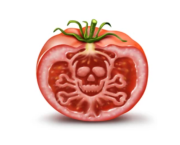



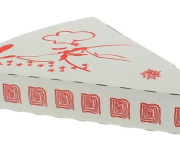
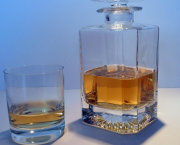
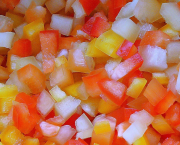
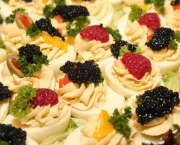
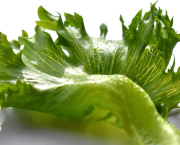
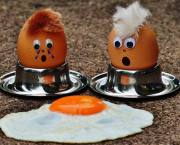
 Du kannst deine Lieblingsautoren unterstützen
Du kannst deine Lieblingsautoren unterstützen





